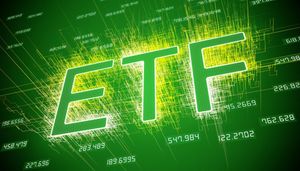
A two-year hiatus culminates in a device poised to reshape the wearable market and personal health monitoring.
After a notable two-year absence since its last iteration, Apple (NASDAQ: AAPL) has unveiled the Apple Watch Ultra 3, a device that emphatically reclaims its "Ultra" moniker. Launched on September 9, 2025, and available for purchase on September 19, this latest premium wearable is not merely an incremental update but a significant leap forward, integrating groundbreaking features like two-way satellite connectivity and advanced hypertension detection. Its release is set to send ripples through the financial markets, impacting Apple's revenue streams, challenging competitors, and accelerating broader trends in health technology and telecommunications.
A New Benchmark for Rugged Smartwatches and Personal Health
The Apple Watch Ultra 3 arrives with a suite of enhancements designed to appeal to adventurers, athletes, and health-conscious consumers alike, justifying its extended development cycle. A standout feature is the built-in satellite communication, which allows users to text emergency services, send messages to contacts, and share their location even in areas without cellular service. This critical safety feature is offered free for two years, with potential subscription models thereafter. Complementing this is 5G RedCap support, promising faster and more power-efficient cellular data.
The display receives a significant upgrade, now the largest ever on an Apple Watch, boasting a 422 by 514-pixel resolution and a 1245 sq mm display area within the same 49mm case, thanks to reduced bezels. Utilizing LTPO3 and wide-angle OLED technology, it offers an always-on 1Hz refresh rate and a peak brightness of up to 3000 nits, ensuring exceptional visibility in diverse conditions. Battery life has also been extended to 42 hours of normal use, with up to 72 hours in Low Power Mode, alongside improved fast charging. Powering these advancements is Apple's new S10 chip, featuring a 4-core Neural Engine for enhanced performance and on-device AI.
On the health front, the Ultra 3 introduces hypertension detection, tracking blood pressure trends via the optical heart sensor and notifying users of consistent signs of high blood pressure, though it doesn't provide specific readings. This, along with a new Sleep Score feature and an AI-powered "Workout Buddy" experience via watchOS 26 and Apple Intelligence, solidifies its role as a comprehensive health guardian. Initial market reactions and analyst expectations, including those from Ming-Chi Kuo and Mark Gurman, suggest the Ultra 3 is a "meaningful" and "substantial upgrade," particularly for its target demographic, with its $799 starting price remaining consistent despite the added innovations.
Market Movers: Winners and Losers in the Wake of Ultra 3
The launch of the Apple Watch Ultra 3 is poised to significantly impact various players across the tech and financial landscapes.
Apple (NASDAQ: AAPL) stands to be the primary beneficiary. The Ultra 3’s premium features and pricing are expected to drive revenue growth and boost the Average Selling Price (ASP) of its wearables division. By further differentiating its high-end offering, Apple can solidify its already dominant position in the U.S. and global smartwatch markets. The potential for future subscription revenue from satellite services and enhanced engagement with Apple Fitness+ through AI-powered health features also strengthens its services segment. Furthermore, Apple's commitment to sustainability, with the Ultra 3 reportedly using 40% recycled content, could enhance brand perception and potentially lead to cost efficiencies.
Apple’s key suppliers will also see increased demand. Chip manufacturers, such as Taiwan Semiconductor Manufacturing Company (TSMC), will benefit from the production of the new S10 chip. Display manufacturers will experience high demand for the Ultra 3’s larger, brighter LTPO3 OLED screens. Connectivity component suppliers, including those providing 5G RedCap modems and satellite communication hardware, will secure substantial contracts. Health sensor developers will continue to innovate to meet Apple’s stringent requirements for advanced monitoring features like hypertension detection.
However, the Ultra 3 presents a formidable challenge to competitors. Samsung (KRX: 005930), which offers its own "Ultra-branded" Galaxy Watch, will face intensified pressure to match Apple’s satellite connectivity and advanced health features. While Samsung has its own blood pressure monitoring, the Ultra 3's broader suite of features could compel Samsung to accelerate its R&D. Google (NASDAQ: GOOGL) and its Fitbit brand, with the Pixel Watch 4 already incorporating satellite connectivity and an AI health coach, are directly competing. However, the Pixel Watch 4's satellite features are offered without an "Ultra" premium, potentially providing a value advantage for Android users. Garmin (NYSE: GRMN), a long-standing leader in rugged outdoor smartwatches, faces direct competition in its core niche. Garmin's Fenix 8 Pro series, also launched in September 2025, includes built-in inReach technology for satellite communication, indicating a proactive response. The Ultra 3's enhanced durability and satellite capabilities will force Garmin to further innovate in specialized outdoor metrics and battery life, where it traditionally holds an edge, or risk market share erosion.
Broader Industry Ripples and Regulatory Horizons
The Apple Watch Ultra 3's innovations extend beyond mere product features, creating significant ripple effects across the wearables, health tech, and telecommunications industries, while also drawing attention to regulatory and policy implications.
The integration of two-way satellite connectivity into a mass-market consumer device marks a pivotal moment in telecommunications. It expands personal communication reach beyond terrestrial networks, leveraging Low Earth Orbit (LEO) satellite constellations. This mirrors the earlier introduction of satellite SOS on iPhones and signifies a growing trend of direct-to-device satellite services, offering crucial redundancy and extending network coverage to previously unreachable areas. For the wearables industry, it elevates smartwatches from urban conveniences to vital survival tools for outdoor enthusiasts, pushing the boundaries of safety and connectivity in rugged environments.
The hypertension detection feature solidifies the Apple Watch's role as a proactive health guardian. Moving beyond basic vital sign tracking, it infers and alerts users about chronic conditions, aligning with the broader health tech trend of preventive healthcare and personalized health management. This positions the Ultra 3 firmly within the digital health and remote patient monitoring (RPM) landscape, potentially impacting millions globally by facilitating early detection of a major risk factor for cardiovascular diseases.
These advancements will undoubtedly intensify competition, forcing rivals like Samsung, Google, and Garmin to accelerate their own development in advanced connectivity and health features. It also fosters new partnerships with LEO satellite operators and could lead to increased collaboration between Apple and healthcare systems, as well as health insurers, leveraging the device's data for remote patient monitoring and wellness programs.
On the regulatory front, features like hypertension detection, being clinically studied and expecting FDA and other regulatory clearances, highlight the growing need for robust frameworks for consumer wearables offering medical insights. Regulators are grappling with how to classify and oversee devices that blur the line between consumer electronics and medical devices, demanding clearer guidelines on accuracy, clinical validation, and liability. Furthermore, the collection of highly sensitive health data amplifies existing data privacy concerns, necessitating stringent adherence to regulations like GDPR and HIPAA, transparent policies, robust security measures, and explicit user consent. Historically, the original Apple Watch (2015) mainstreamed smartwatches, and the Apple Watch Series 4 with ECG (2018) made a "giant leap" into medical-grade health monitoring. The Ultra 3, with its convergence of robust off-grid communication and advanced health detection, builds on these precedents, setting a new benchmark for what a wrist-worn device can achieve.
The Road Ahead: Strategic Shifts and Emerging Opportunities
The launch of the Apple Watch Ultra 3 ushers in a new era for wearable technology, presenting both immediate and long-term implications for Apple and the wider market.
In the short term (1-2 years), Apple is expected to reinforce its market leadership in the premium wearable segment. The Ultra 3’s advanced health and connectivity features will drive sales, attract new users, and deepen ecosystem lock-in, contributing to higher average selling prices. This also opens avenues for new subscription services, offering personalized health coaching or detailed data analysis. Competitors will face immense pressure to innovate, potentially leading to increased R&D spending and a focus on niche specialization to avoid direct competition. New user segments, particularly older adults and those at risk of cardiovascular disease, could expand the smartwatch market. However, regulatory hurdles for medical-grade features and growing concerns over data privacy will remain key challenges.
Looking long term (3-5+ years), Apple could strategically pivot further into the healthcare industry, becoming a significant player in preventive and remote patient care through direct partnerships with healthcare systems and insurers. The Ultra 3 could evolve into a central hub for an integrated suite of health devices, potentially including continuous glucose monitoring and advanced diagnostics, all driven by AI. Competitors might increasingly specialize or form cross-industry partnerships with medical device manufacturers. The industry will likely shift towards predictive and preventive care, with wearables facilitating "hospital-at-home" solutions and identifying digital biomarkers for early disease detection. Consumer expectations will demand more than just raw data, seeking actionable insights and seamless integration with broader digital ecosystems. Future product development cycles will heavily leverage AI and machine learning, alongside a continued emphasis on durability, battery life, and sustainability.
A New Horizon for Wearable Technology
The Apple Watch Ultra 3 represents a pivotal moment for the wearable technology market, demonstrating that a strategic pause can lead to a truly transformative product. By delivering on the promise of its "Ultra" name with groundbreaking satellite connectivity and advanced health monitoring, Apple has not only reinforced its dominance in the premium smartwatch segment but also set a new standard for innovation across the industry.
This launch underscores a broader trend towards wearables becoming indispensable tools for both extreme adventure and everyday health management. For investors, the Ultra 3 signifies Apple's continued ability to innovate and expand its ecosystem, driving revenue growth and potentially opening new service-based opportunities in health and safety. While competitors will face heightened pressure to respond with their own advancements, the overall market for smartwatches and health tech is poised for accelerated growth and increased sophistication. Investors should closely watch for regulatory developments concerning medical-grade features in consumer devices, the evolution of satellite service subscription models, and how competitors adapt their strategies to this new benchmark. The Apple Watch Ultra 3 is more than just a new gadget; it's a clear signal of the future direction for personal technology and well-being.
This content is intended for informational purposes only and is not financial advice


















